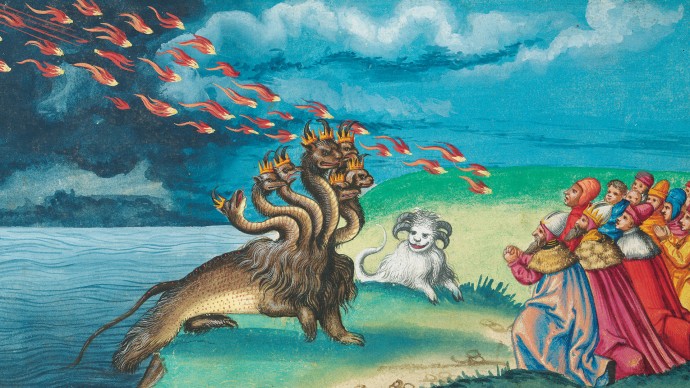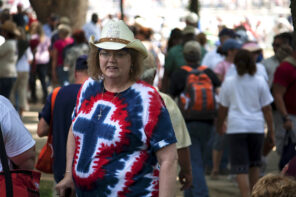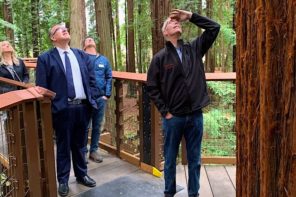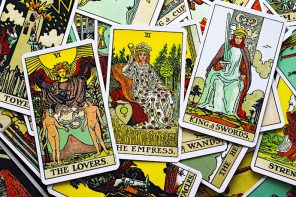This year, 2014, is the 40th anniversary of the game Dungeons & Dragons, the pen-and-paper role-playing game that not only launched an industry but provoked a wide-ranging cultural shift. In celebration of the anniversary—incidentally, also the 10th anniversary of its videogame-changing scion, World of Warcraft—Wizards of the Coast launched a new, and already best-selling, edition of D&D, and with it they will, later this month, issue the latest incarnation of the single most important and widely read bestiary ever published: The Monster Manual.
New generations will wonder at the immensity of our monstrous imaginations while many relish anew their dreams of an enchanted world. And so, thanks to the game and The Monster Manual, we have a moment to contemplate what it means to imagine monsters and what it means to imagine the future—for it turns out that to do the one is to do the other.
We wish for an enchanted world, and such a world is by its very nature monstrous. How then, if we hope to see the world reconfigured and made meaningful and transcendent, could we do so without welcoming back the demons and dragons in all their glory? Indeed, our popular culture is rich in zombies, vampires, and even a 50-meter radioactive lizard, all being reimagined, reinterpreted, and pressed into the service of each generation’s dreams.
[T]he seeds of today’s religious landscape were present in The Monster Manual, with its dreadful dangers and exuberant enchantments.
As harbingers of doom and joy both, bestiaries are part of historical transitions and inaugurate new religious visions. Of the book’s Reformation context, the New York Review of Books’ Marina Warner noted that:
[T]he new focus on reading the Bible led to a resurgence of interest in stories of direct divine intervention, and Protestant Europe in the sixteenth century saw a “boom” in compendia of miracles…
The Monster Manual is likewise a product of its time, an expression of the secular age. One of its accompanying texts, Deities & Demigods (later renamed Legends & Lore), taught religious pluralism to countless children. As a reader turned the pages, he or she saw one religion transition into another, each of which was given credibility and imaginative expression. All myths, heroes, and religions were on equal footing. The only religion that towered above them all, that absorbed them into its enchanted world, was the game itself.
Dungeons & Dragons gave players a miraculous world in which to live, a substitute for traditional theologies locked into hidebound dogmas and uncritical assumptions. These imaginary worlds have paralleled the rise of other secularized religious beliefs like those observed among millennials, the generation of the “nones.” It’s a new world for religion, and the seeds of today’s religious landscape were present in The Monster Manual, with its dreadful dangers and exuberant enchantments.
A bestiary can both catalogue the threat of our demise and foretell the joy of a new world; it is a story of grotesque threats and glorious salvation. Indeed—as cartographers knew long before recent conspiracy theorists saw the Loch Ness Monster in Apple Maps—at the limits of our knowledge, at the frontiers of our imagination, here be dragons!
For many, The Monster Manual was a monster itself; it provoked fear among Christian conservatives and provided a locus for the kind of moral panic and public rhetoric that Dr. Leslie Smith has recently labeled “chaos rhetoric.” And perhaps those fears were, in some sense, well-founded; for like The Book of Miracles, The Monster Manual foretold a new world, not just a world of the imagination.
For the past decade or so, it has been obvious that D&D was not simply the idle play of disaffected teen boys; it was the game that launched a thousand careers—and ten times a thousand new worlds. Once ridiculed as the escape of disaffected teenagers, D&D is now revered for its influence on authors, technical innovators, and even humble academics. The Monster Manual was, for so many, not just the escape from mundane reality, but a dive into progressive dreams about what the world ought to be.
Today’s media marketplace was constructed on a scaffold of adventures, role-played in the depths of the night, fueled by pizza, soda, and dreams. Today’s videogames are the highest grossing entertainment medium in the world, and they are the direct descendants of D&D.
These digital worlds populated by monsters and magic were made possible by The Monster Manual. That volume, with more than 200 monsters described (and often illustrated), was the first hardcover book issued for D&D, and what could be more appropriate than that the bestiary be honored so? The Monster Manual introduced so many of us to the possibilities of an enchanted existence; to a world peopled by monsters and described by our imaginations and defined by our rigorous mathematical calculations of hit points, armor class, and magic resistance. As we engaged those monsters, we did so with a bag of polyhedral dice, starting with our “lucky” ones but swapping those for others when our providential expectations met with no success.
And today such monstrously populated worlds emerge in vivid graphics on our computer screens and in Hollywood films. We part company with conventional reality for a moment and take up residence online, joining millions of others in a search for the sublime reality that can be only momentarily captured in a book of monsters, which is always and ever a book of miracles.
The dreams we realize in movies, virtual realities, and videogames are the dreams we have always dreamed; the monsters we find there are the monsters we cherish, for it is their presence that reminds us of what matters. Or, better, it’s their presence that reminds us that we must make the world matter.





